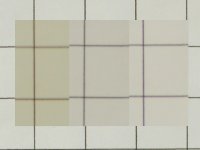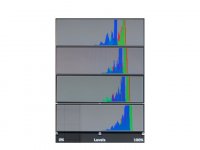Jerry,
If the SE transmits more light, it's not a difference in brightness that allows us to see more detail in low light with the EII.
I think one of the reasons we can see more detail in the EII in low light is due to the color bias in the different coatings used in early vs. late SEs and the difference btwn the coatings of the SE vs. the EII.
I have described looking through the 501 vs. 505 as the 501 as being more like a "gray scale" vs. eye popping colors. Looking at the various green colors of the trees and bushes in my backyard with the 501 SE, nothing really "pops" out, variations are very subtle. It's like a "gray scale" in green. Whereas with the 505 SE, any brown or red in the leaves will jump out at you. That's more dramatic with the EII where even the various greens show more degrees of separation than the early SE.
In addition, there's also a marked difference in
contrast btwn the SE and the EII, which is even more obvious in comparing an early SE to an EII. The latest coatings on the 050xxx 10x42 SE (and presumably the 550 8x32 you have squirreled away

show improved contrast closer to the EII's.
Here's a reference I found that Ed might be able to amplify on that discusses "Optical Illusions Of Brightness And Contrast". The EII's brighter colors and increased contrast vs. the SE might be the factors that allow us to see more detail with the smaller aperture Nikon.
http://www.visualillusion.net/Chap08/Page01.php
Brock






